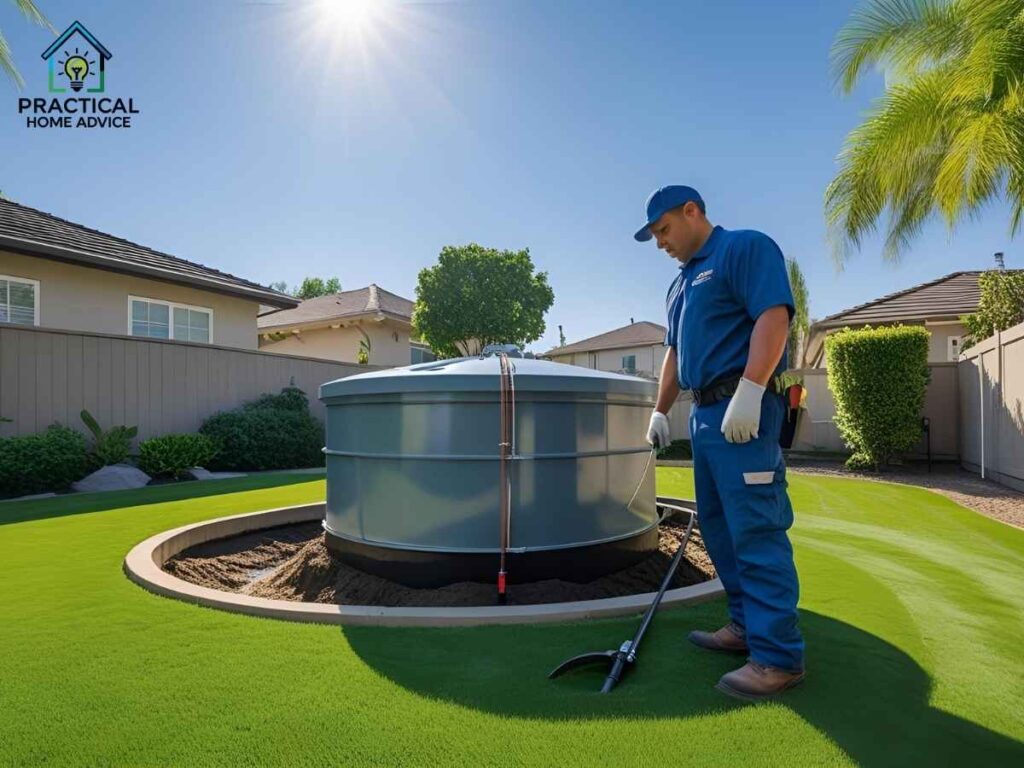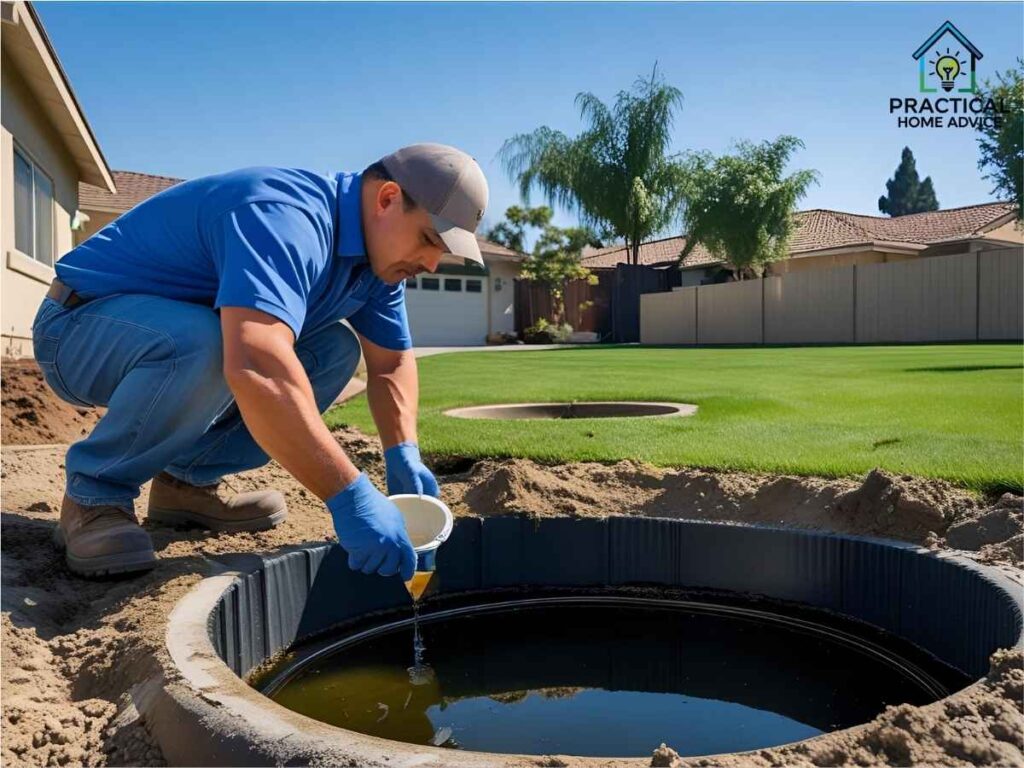Maintaining a septic tank system in Northwest Fresno-style homes around Los Angeles presents unique challenges and opportunities. Whether nestled in the cozy community near Sylmar or out towards the edges of Sun Valley, septic tanks remain essential for many households not connected to the city’s vast sewer infrastructure. If you live in Los Angeles and rely on a septic system, this comprehensive checklist will guide you through evaluating and sustaining your septic tank’s health with the knowledge, tools, and tips that resonate with local conditions and rules.
Living in Los Angeles means contending with an intertwining of sprawling urban neighborhoods, variable microclimates, and strict environmental codes. From the dry, warm air of Studio City (ZIP code 91604) to neighborhoods like Panorama City (ZIP code 91402) that see more seasonal rain, your septic system faces different stresses. Groundwater levels, soil composition, and maintenance access differ widely—and they all impact how your septic tank performs.
Table of Contents
Understanding Septic Systems in Los Angeles’ Local Context

Many homes across Los Angeles County depend on Onsite Wastewater Treatment Systems (OWTS), commonly referred to as septic systems. The local Department of Public Health defines how these systems should be maintained, especially in unincorporated areas and neighborhoods without access to municipal sewage lines.
In Los Angeles, proper septic tank care is not just about protecting your property; it’s critical for safeguarding the surrounding environment. With the region’s reliance on groundwater and increasing drought risks, a malfunctioning septic system can lead to public health hazards, contaminating soil and water.
Local Challenges Specific to Northwest Fresno-Style Septic Systems
- Irregular rainfall patterns: Southern California’s dry spells alternating with unusual heavy rains can saturate soil, leading to leach field overloads and drainfield failures.
- Soil types: Parts of LA like Panorama City and neighboring neighborhoods often have clay-heavy soils, which drain slower, affecting septic tank effluent absorption.
- Aging Infrastructure: Many homes with older septic systems face risks of cracks and leaks, especially when roots penetrate tanks and pipes.
Your Northwest Fresno Septic Tank Health Checklist
To keep your septic system operating well and compliant with local regulations, here is a detailed, actionable checklist based on both regulatory requirements and practical, frontline knowledge:
1. Schedule Annual Inspections and Pumping
- Inspect and pump your septic tank every 3–5 years, or sooner depending on household size and tank capacity.
- Look for clear records confirming inspections and pumping — Los Angeles County Public Health requires documentation to track system health.
2. Check the Physical Condition of the Tank
- Confirm the tank is watertight — levels should be stable and remain at the base of the outlet pipe.
- Inspect for cracks or root intrusions in the tank walls.
- Ensure sanitary tees and baffles in the inlet and outlet lines are intact to prevent sludge and scum clogging.
3. Monitor Tank Liquid Levels and Scum Layers
- Liquid should be at the proper level—too high indicates potential clogs or drainfield problems; too low suggests leaks.
- A healthy scum layer looks like rich, living soil without strong odors. If the scum layer is too close to the tank lid, your tank likely needs pumping.
4. Evaluate the Drainfield or Leachfield
- Check for wet or spongy soil, bad odors, or unusually green, lush grass even in dry seasons—these are signs your drainfield might be failing.
- Conduct a hydraulic loading test if needed: gently running water through the system and checking for proper absorption.
- Confirm the drainfield’s distance to wells, ponds, trees, and structures adheres to Los Angeles Plumbing Code setbacks.
5. Practice Water Efficiency and Proper Waste Disposal
- Limit water use during peak periods.
- Avoid flushing non-biodegradable items, grease, or chemicals which disrupt bacterial balance.
- Divert rainwater or surface water away from the septic system to prevent overload.
6. Know When to Repair or Replace
- If leaks or cracks are unrepairable or the drainfield fails entirely, consult local authorities about necessary permits for replacements.
- Keep in mind that repairs often require verification through water-tightness testing.
Real Local Experiences: Success Stories from Across Los Angeles
Studio City: Denise’s Drainfield Rescue
Denise noticed her backyard near the Los Angeles River Channel was soggy and smelled bad despite a dry summer. Following the checklist, she had her system inspected by a certified LA septic technician. They discovered a clogged outlet baffle and a damaged leach field area. A pumped tank and repaired baffle combined with a new trench installation restored her system’s health. Denise now keeps rainwater diverted and schedules regular inspections every two years.
Sun Valley: David’s Septic Tank Upgrade
In the Sun Valley neighborhood, David’s family home septic tank was dated and undersized for their six-bedroom house. Using the city’s recommended 1500-gallon tank guide and referencing Los Angeles County plumbing codes, David replaced the aging system. The new setup improved wastewater treatment flow and eliminated past odors and slow drains. His new system passed inspection with flying colors and received approval from the LA Department of Public Health.
Panorama City: Maria’s Proactive Pumping Plan
Maria experienced backups in her home pipes during rainy months. Adhering to the checklist prompts, she contacted a local LA septic pumping service for regular maintenance and cleaning, including the effluent filter. Having been proactive, Maria avoided major system failure and significantly extended the lifespan of her system despite heavy household use.
Top 3 Local Septic Tank Service Providers in Los Angeles

- West Coast Sanitation Inc.
Renowned for expert residential and commercial septic installation and maintenance in Los Angeles. Their 24/7 service offers efficient tank pumping, repair, and full system replacements with high-quality materials.
Website: westcoastsanitationinc.com - SewerMan of West Los Angeles
Provides thorough commercial and residential septic tank pumping services alongside inspections and repairs. Known for professionalism and detailed reporting.
Website: sewerman.com - Frank’s Pumping, Inc.
Family-owned and trusted by Inland Empire and LA residents, Frank’s Pumping specializes in fast, reliable septic services, including emergency pumping and repairs.
Website: frankspumping.com
Useful Local Tools and Resources
- Los Angeles County Department of Public Health OWTS Program
For permits, system approvals, and comprehensive guidelines on septic systems.
Website: publichealth.lacounty.gov/eh/business/onsite-wastewater-treatment-system.htm - Los Angeles Department of Water and Power (LADWP)
Water efficiency resources to help reduce usage and protect your septic system’s longevity.
Website: ladwp.com - Los Angeles County Plumbing Code
Detailed regulations governing septic tank installation and maintenance.
Website: municode.com/ca/los_angeles_county/codes/code_of_ordinances/354460
Answering Your Common Local Questions
How often should I pump my septic tank in Los Angeles?
Typically, every 3 to 5 years depending on household size and tank capacity. Large families or small tanks might need more frequent service.
What signs indicate a failing septic system in LA’s climate?
Look for slow drains, sewage odors, standing water near the tank, or vibrant green patches of grass even in dry weather—these indicate possible failure.
Can I install or upgrade my septic system myself in Los Angeles?
No, installation or major repairs require permits and inspections by local authorities to comply with health and safety codes.
How does LA’s dry climate affect my septic system?
Extended dry periods reduce soil moisture, which can impact bacterial activity in the tank and drainfield. Conversely, sudden rain can saturate drainfields and cause backups.
Are there local incentives for water conservation related to septic maintenance?
Some LA water agencies offer rebates and resources for water-efficient appliances and behavior, indirectly benefiting septic health by reducing unnecessary water flow.


